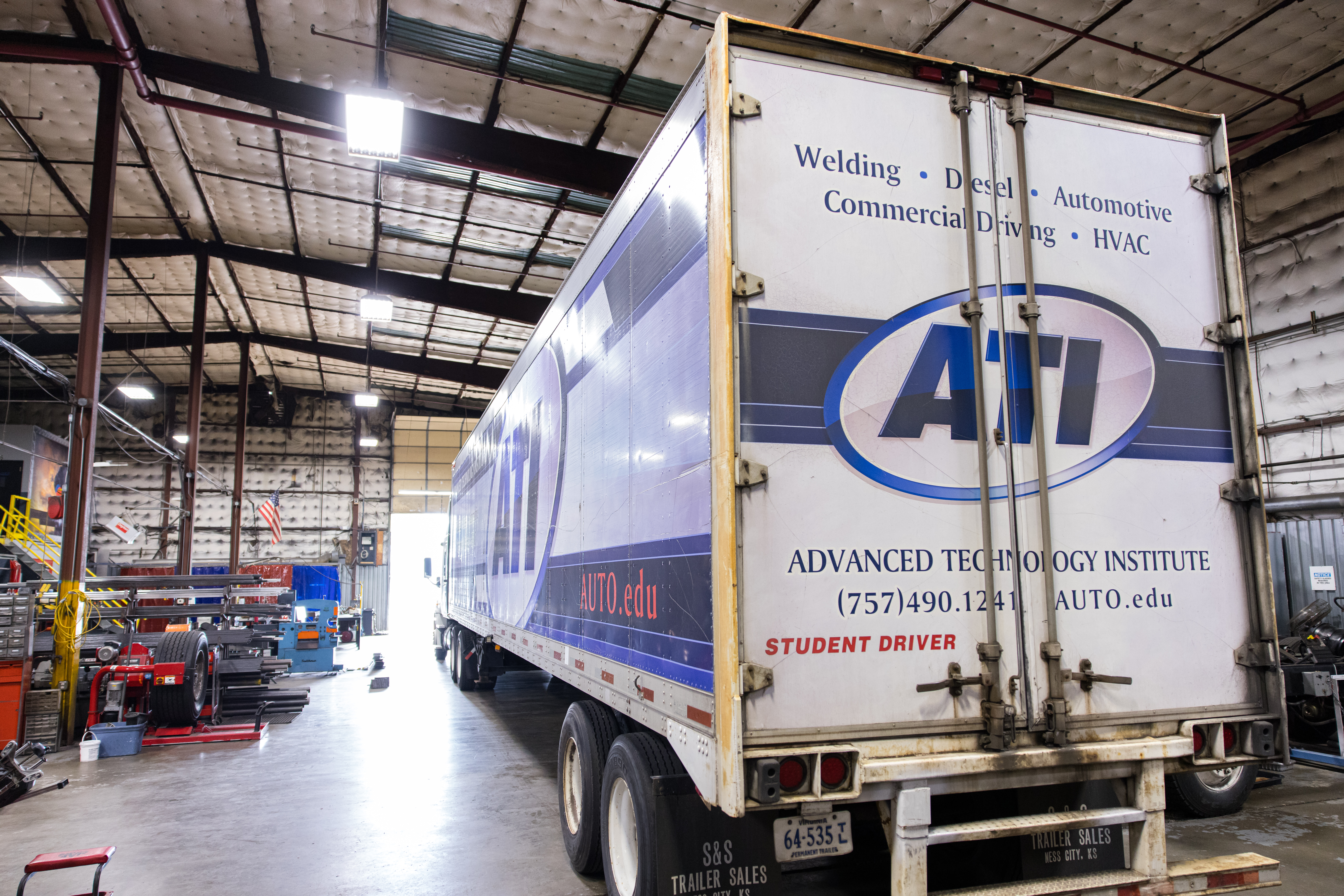CDL School: Everything You Should Know

In today’s economy, the movement of goods across state lines is a vital part of everyday life. Trucks deliver food, fuel, building materials, and more. Behind every delivery is a professional driver who has earned a Commercial Driver’s License (CDL). But how do you become one of them?
That journey typically begins at CDL School, a training ground for individuals who want to qualify for commercial driving positions by learning the rules, techniques, and skills required to operate large vehicles safely and legally.
Quick Links
-
What is CDL School?
-
What Do You Learn in CDL School?
-
How Long Does CDL School Take?
-
Do You Need High School Diploma for CDL?
-
Is CDL School Hard?
What is CDL School?
CDL School refers to a structured training program designed to prepare individuals for the written and skills-based exams necessary to obtain a commercial driver’s license. Unlike general driving schools, CDL School focuses specifically on the operation of commercial motor vehicles such as semi-trucks, buses, and tankers.
The training at CDL School is both theoretical and practical. Students engage in classroom-based instruction as well as real-world driving experiences. These programs are designed to meet state and federal guidelines, ensuring that students are prepared not only to pass their CDL tests but also to comply with Department of Transportation (DOT) standards.
What is the purpose of CDL School?
The primary purpose of CDL School is to equip aspiring drivers with the knowledge and skills required to safely operate a commercial vehicle. This includes training in defensive driving, accident prevention, vehicle inspections, cargo handling, and regulatory compliance.
CDL School also helps students prepare for the three-part licensing process:
- Commercial Learner’s Permit (CLP): This is the first step and involves passing written exams.
- Behind-the-Wheel Training: Students log time driving under the supervision of a licensed instructor.
- Skills Test: This includes a vehicle inspection, basic control test, and road test.
Without formal training, passing these requirements can be difficult due to the complexity of the regulations and operational procedures.
What do you learn in CDL School?
The curriculum at a CDL School typically includes the following components:
1. Classroom Instruction
-
- Federal and state trucking laws
- Hours-of-service rules
- Logbook usage and electronic logging devices (ELDs)
- Map reading and route planning
- Weight limits and bridge laws
- Pre-trip inspection procedures
- Air brake systems
- Hazardous materials awareness (if applicable)
2. Hands-On Driving
-
- Perform pre-trip inspections
- Operate a commercial vehicle in various conditions (city streets, highways, and rural roads)
- Shift gears in manual and automatic transmissions
- Execute maneuvers such as backing, parallel parking, and turning
- Secure different types of cargo
3. Testing Preparation
-
- The written knowledge test (general knowledge, air brakes, combination vehicles, etc.)
- The skills test (vehicle inspection, basic control, and on-road driving)
Some schools also offer specialized endorsements training, such as:
-
- Tanker (N)
- Hazardous Materials (H)
- Doubles/Triples (T)
- Passenger Transport (P)
- School Bus (S)
These endorsements expand the types of vehicles a CDL holder can operate and are often required for specific job roles.
.jpg?width=768&height=512&name=ATI-Diesel%20Day-022323-3%20(1).jpg)
How Long Does CDL School Take?
Many prospective students ask, how long does CDL School take? While timelines vary depending on the program and whether you attend full-time or part-time, most CDL Schools can be completed in 4 to 8 weeks.
Factors That Affect CDL School Length
- Full-Time vs. Part-Time: Full-time students usually attend daily classes and complete their training faster. Part-time programs may take longer but offer flexibility for those with jobs or family responsibilities.
- Endorsements: If you’re pursuing additional endorsements (like hazmat or passenger), expect extra hours of instruction.
- State Requirements: Some states have mandatory minimum hours for both classroom and driving time.
- Readiness for Testing: If a student needs additional practice before taking the skills test, this can extend the overall time in school.
Some schools follow a clock-hour model (e.g., 160 hours total), with segments broken down into classroom learning, range time, and road driving.
Do You Need High School Diploma for CDL?
There are a few basic requirements needed to be eligible to start on your CDL journey.
- Be at least 18 years old to drive intrastate (within the same state) or 21 years old for interstate driving (across state lines).
- Hold a valid, non-commercial driver’s license.
- Pass a DOT medical exam and drug screening.
- Provide proof of identity and U.S. residency or lawful presence.
While a high school diploma or GED is not a federal requirement, some employers may prefer or require one for employment. Additionally, certain training programs affiliated with community colleges may have academic prerequisites, but most standalone CDL schools do not.
In summary: you don’t need a high school diploma to get a CDL in most cases, but it could improve your long-term employment opportunities depending on the carrier or company.
Is CDL School Hard?
One of the most important questions for potential students is, is CDL School hard? The answer depends on your familiarity with large vehicles, your learning style, and your ability to stay disciplined through a fast-paced training process.
What are the challenges of CDL School?
CDL School is highly structured, and some students may find the following elements challenging:
- Learning vehicle mechanics and inspection protocols
- Understanding DOT regulations and hours-of-service rules
- Maneuvering and backing a large vehicle
- Navigating technical written exams
- Developing the muscle memory for clutch control and shifting in manual transmissions
The training is designed to simulate the demands of a real-world driving environment. For students with no previous exposure to trucking or logistics, the adjustment can be significant.
In addition to driving skills, time management and focus are essential. Students must absorb a significant amount of information in a short time frame, especially in accelerated programs.
Tips to Succeed in CDL School
- Attend all classes and stay on top of homework or reading assignments.
- Ask questions if you’re struggling with a concept or maneuver.
- Practice with instructors or peers as much as possible.
- Take your time during pre-trip inspections, accuracy matters more than speed.
- Prepare thoroughly for the written exam using practice tests and CDL manuals.
CDL School is rigorous because it has to be. Commercial drivers are responsible for operating large, potentially hazardous vehicles in public spaces. The intensity of training is meant to ensure safety, legal compliance, and readiness for real-world driving.
Earning a CDL is a regulated, structured process—and CDL School is the foundation. From classroom theory to hands-on vehicle operation, these programs are designed to prepare you for the licensing exam and the responsibilities that come with driving commercial vehicles.
Ready to begin your journey toward a CDL?
Explore reputable CDL training programs and take the first step toward a certified commercial driving career. For more information on licensing and training requirements in your state, visit your state’s Department of Motor Vehicles (DMV) website or consult with a licensed CDL training provider.
Industry Knowledge
Welcome to the Advanced Technology Institute's Blog, your resource for industry insights and discussions on technologies shaping the future of automotive, heavy vehicle, hvac, welding, and other related career paths.
Explore how ATI's curriculum and hands-on learning opportunities can propel your career in the tech-driven world.

%20(1).jpg)
-2.jpg)